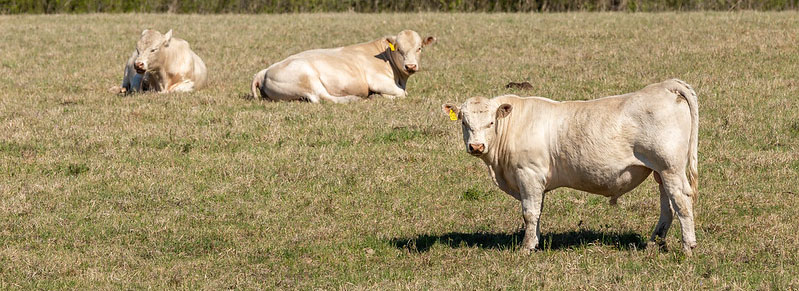Selecting sires to create replacement females
K-State Beef Cattle Institute experts recommend using the maternal selection index when deciding what bulls to use.
April 25, 2024

When making a decision, many people believe it is important to gather as much information as possible to set the path for the future. When selecting sires, beef producers have a lot of data to reference, said the experts at Kansas State University’s Beef Cattle Institute on a recent Cattle Chat podcast.
The experts focused on selecting bulls that could work as sires mated to first-calf heifers, and that the female calves from this mating could be retained in the herd as replacement heifers.
“When it comes to heifer matings, it is important to look at the potential sires’ calving ease direct EPD (Expected Progeny Difference), but I also recommend using a selection index as part of the sire selection process,” said Bob Weaber, K-State beef cattle geneticist and head of the Eastern Kansas Research Extension program.
He said the selection indexes are built from multiple data inputs, which gives producers more information than a single-trait data point, such as an EPD.
“Many producers are looking to manage mature cow size and lactation potential to control maintenance and production costs and that is where using selection indexes can help,” Weaber said. “Using a selection index that is targeted towards replacement females and understanding the marketing endpoint is valuable because it balances out the pressure from growth and performance relative to cost.”
K-State veterinarian Bob Larson agreed and added that the beef breed associations and artificial insemination bull studs make that data available to producers working through the sire selection process.
“Each breed association has slightly different indexes, but they are similar, and for building matings to create replacement heifers, it is important to select a bull that is high for the maternal index,” Larson said.
When Weaber works through this process, he goes to searchable databases to put in his criteria and then sorts through the rankings provided to him.
“Start the search to find the index for the best-performing animals to meet the marketing endpoint and then sort that sub-group for the single trait that you are most concerned about,” Weaber said. “So, in the case of planning matings to heifers that will be used to create replacement heifers, first sort on the maternal index and then calving ease direct. By doing that you are optimizing the most economically important traits.”
You May Also Like



